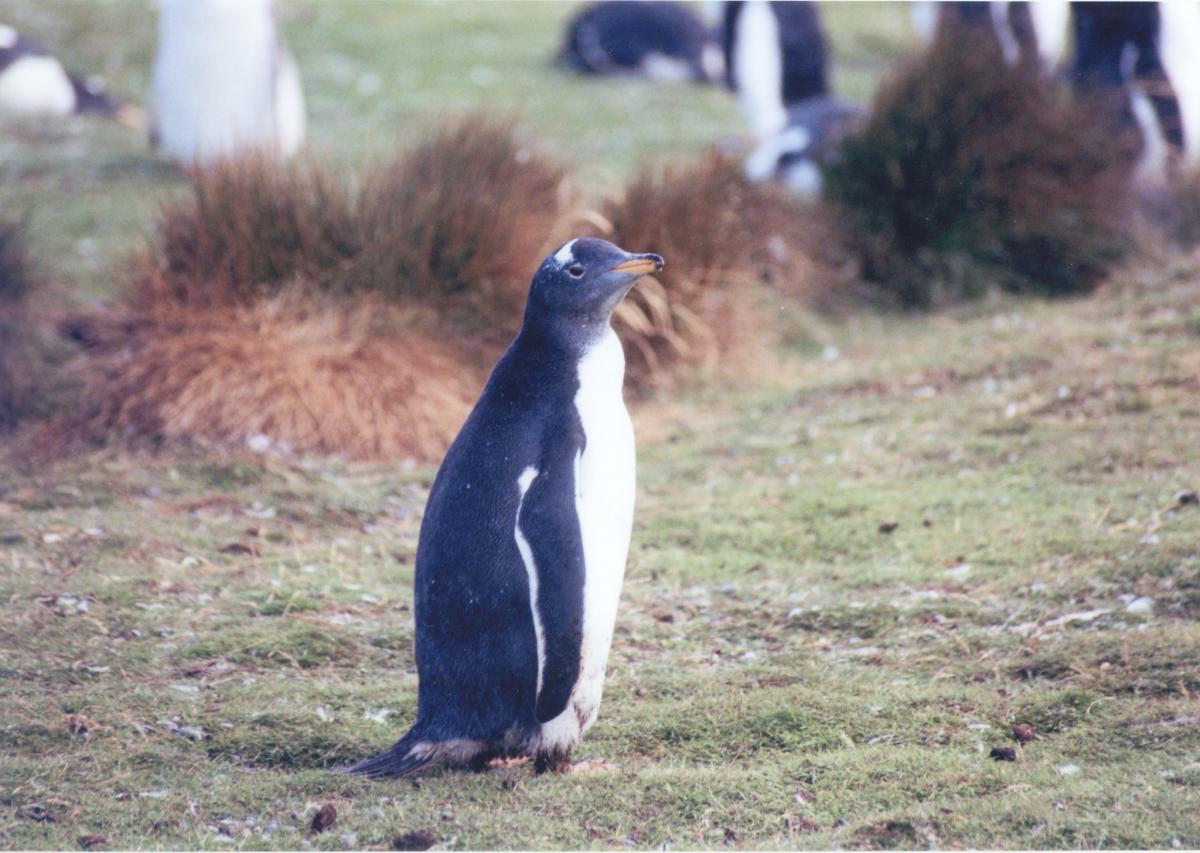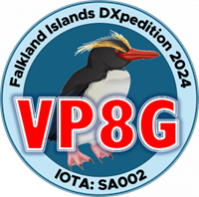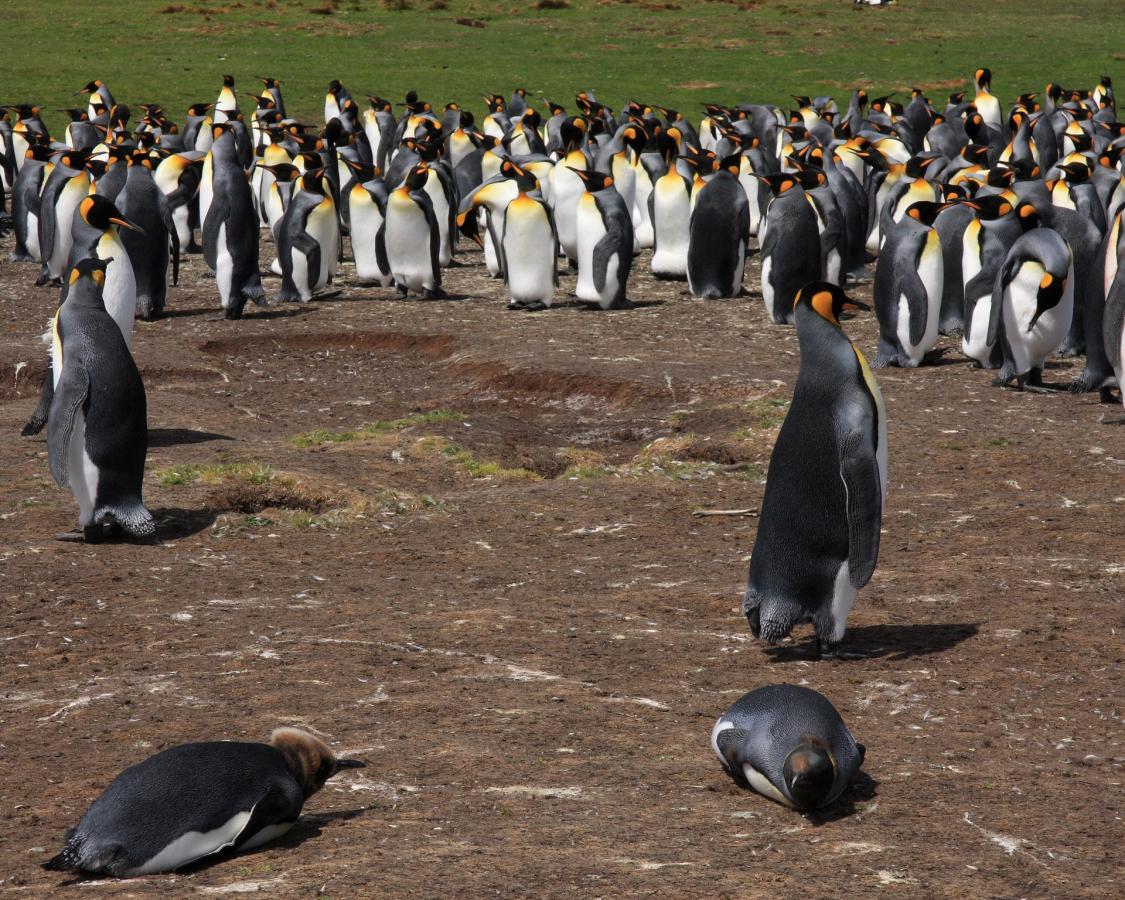Gerben, PG5M will be active as VP8G from Falkland Islands, IOTA SA - 002, 15 - 25 November 2024.
He will operate on 40 - 6m, CW, FT8.
Recent DX Spots VP8G
VP8G Log search QSL via M0OXO, OQRS.
Planned freqs:
Band CW FT8
40 7010 7061
30 10120 10143
20 14010 14085
17 18070 18090
15 21010 21086
12 24910 24916
10 28010 28086
6 50330.
The Falklands are islands of discord
The Falklands archipelago, with an area of over 12,100 km2, is located in the South Atlantic, 450 km east of the coast of Argentina. It consists of two large islands and more than 770 small rock formations.
The rugged region with a rather cool, oceanic climate attracted whalers in ancient times, and today it is a British overseas territory. For more than two centuries, there have been territorial disputes between Britain and the Argentines over the right to call the Falkland Islands their own.
 Falkland Islands. Author - Skua Brown.
Falkland Islands. Author - Skua Brown.
A mess in the South Atlantic
When the English arrived in the Falklands in 1591, they found no permanent settlements and rushed to declare the land the property of the English crown. They were soon overtaken by the Spanish, who laid claim to the islands.
In 1764, the French sailor Louis de Bougainville established a settlement on the eastern edge of the archipelago. At the same time, the British began exploring the western tip of the Falklands, establishing a colony there. Both sides were unaware of each other's existence, but everything changed 3 years later when Spain decided to buy out Bougainville's possessions and appoint its own governor on the islands. The result was the storming of the English Port Egmond and the expulsion of the Redcoats. A year later, the parties signed a peace treaty, but did not give up their claims.
In 1774, the British were forced to leave the Falkland Islands, and until 1811, the Spanish were the sole rulers of these territories. However, they soon abandoned the archipelago. Argentina, which had gained independence from the Spanish crown in 1816, declared the Falklands its territory and sent a new governor there in 1832. The settlers there revolted and killed him, and a year later the British landed on the islands, reestablishing their colony.

VP8G. Falkland Islands. Logo.
Naval squadrons on the horizon
During World War I, a naval battle between German cruisers and British battleships played out near the archipelago. As a result, the German ships were sunk, the commander of the squadron - Vice-Admiral Spee - was killed, and the British sea communications in the South Atlantic were restored.
During World War II, Allied ships were repaired on the islands, refueling them. In 1982, Argentine troops landed on the Falklands. This forced the British to send their naval formations of warships there. In a brief skirmish, the Argentines were expelled from the islands. Today Argentina continues to consider them its territory, calling the archipelago Malvinas. Interestingly, in 2013, more than 99% of the local population was in favor of keeping the Falklands as a British Overseas Territory.
 Falkland Islands. Author - Seth.
Falkland Islands. Author - Seth.
Icebergs and morning fogs
The climate on the islands is shaped by cold currents that carry their waters from the shores of Antarctica further north to the Gulf of La Plata. Sometimes small icebergs can be seen near the coastline. Mean annual temperature: +6-7 C°. Westerly gusty winds often blow here, and the proximity of the ocean creates conditions for the formation of fog over the islands. The amount of precipitation during the year is about 600 mm. Most of it falls on East Falkland, as the western areas of the archipelago are rather arid.
The coastline of the archipelago is very indented. Numerous inlets run inland, forming bays into which small streams flow. There are no large rivers on the islands. The highest hill, Usborne (704), is in the eastern part. The flora of Falkland consists of meadow grasses, ferns, heather and more than 260 species of flowering plants.
A land of sheep
There are no large animals on the islands. Local foxes were exterminated by settlers back in the 19th century. Black-browed albatrosses nest on the coastal cliffs, and there are small colonies of penguins. In the ocean waters there are about 7 species of fish and 15 species of marine mammals. There are no reptiles, and the whole archipelago is a real sheep pasture. In the century before last, settlers from Europe brought sheep to the islands to produce wool, meat and milk. Today, the animals have multiplied so much that there are more than 170 sheep per Falklander. There are about half a million of them.
Descendants of whalers
There are less than 3,000 people in total on the islands, mostly in a single settlement, Port Stanley, located on the eastern island. The locals are descendants of whalers and sailors. The English, Norwegians, and Chileans communicate mainly in English and Spanish. The main occupations of the islanders are fishing and sheep breeding, the wool of which is exported to England. Oil and gas resources are being explored on the shelf. There are two seaports and an airport on the territory of the archipelago, and ferries between the largest islands carrying residents and cargo transport.
The Falklands are islands of discord, land of morning mists and fine sheep!

